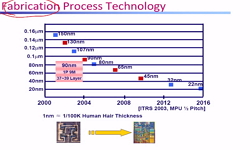Purpose: The aim of this study was to confirm the feasibility of the technique, the so called ‘‘axillary reverse mapping (ARM)’’, and to test the hypothesis that the arm lymphatics are never involved by the metastatic process of breast cancer....
http://chineseinput.net/에서 pinyin(병음)방식으로 중국어를 변환할 수 있습니다.
변환된 중국어를 복사하여 사용하시면 됩니다.
- 中文 을 입력하시려면 zhongwen을 입력하시고 space를누르시면됩니다.
- 北京 을 입력하시려면 beijing을 입력하시고 space를 누르시면 됩니다.



유방암 환자의 액와부 수술 중 상지에서 배액되는 림프 경로의 보존 = Preservation of Lymphatic Drainage of Arm during Axillary Procedure in Breast Cancer Patients
한글로보기https://www.riss.kr/link?id=A104426752
- 저자
- 발행기관
- 학술지명
- 권호사항
-
발행연도
2009
-
작성언어
Korean
-
주제어
팔 ; 유방암 ; 감시림프절생검 ; Arm ; Breast neoplasms ; Sentinel lymph node biopsy
-
등재정보
KCI등재후보,SCIE,SCOPUS
-
자료형태
학술저널
-
수록면
179-185(7쪽)
-
KCI 피인용횟수
2
- 제공처
-
0
상세조회 -
0
다운로드
부가정보
다국어 초록 (Multilingual Abstract)
Purpose: The aim of this study was to confirm the feasibility of the technique, the so called ‘‘axillary reverse mapping (ARM)’’, and to test the hypothesis that the arm lymphatics are never involved by the metastatic process of breast cancer. Methods: We reviewed the prospectively maintained database of 129 patients who underwent an operation for breast cancer. Blue dye was injected in the upper inner arm to identify the draining lymphatics or lymph nodes from the arm. During the axillary procedure, we found the ‘‘blue’’ ARM node and the ‘‘hot’’ sentinel lymph node (SLN). The histological results of the ARM nodes were compared with those of the other nodes harvested in SLN biopsy (SLNB) or axillary lymph node dissection (ALND). Results: The ARM nodes were identified in 78.3% (101/129) of the patients. The ARM nodes were identified in 71.6% (58/81) of the patients with SLNB and in 88.4% (38/43) of the patients with SLNB followed by ALND and in all cases with ALND. In 19 of the 96 SLNB cases, the ARM nodes were hot or the SLNs were blue (concordant case), yielding an 18.9% concordant rate between
the ARM node and the SLN. Among these 19 concordant cases, 7 ARM nodes contained metastasis (36.8%). But in the 77 non-concordant cases, only one ARM node was positive for metastasis (1.3%) in a heavily metastasized axilla. The ARM nodes were identified in all five ALND cases, and one ARM node was positive for metastasis. Conclusion: It is thought that lymphatic drainage from the arm can share common lymphatic channels in the axilla with lymphatic flow from breast, and these concordant ARM nodes may be involved by the metastatic process of breast cancer. However in the non-concordant cases, ARM nodes will be free from the danger of axillary dissection.
참고문헌 (Reference)
1 Leidenius M, "The consequences of long-time arm morbidity in node-negative breast cancer patients with sentinel node biopsy or axillary clearance" 92 : 23-31, 2005
2 Hama Y, "Simultaneous two-color spectral fluorescence lymphangiography with near infrared quantum dots to map two lymphatic flows from the breast and the upper extremity" 103 : 23-28, 2007
3 Giuliano AE, "Sentinel lymphadenectomy in breast cancer" 15 : 2345-2350, 1997
4 Carter CL, "Relation of tumor size, lymph node status, and survival in 24,740 breast cancer cases" 63 : 181-187, 1989
5 Blanchard DK, "Relapse and morbidity in patients undergoing sentinel lymph node biopsy alone or with axillary dissection for breast cancer" 138 : 482-487, 2003
6 Mansel RE, "Randomized multicenter trial of sentinel node biopsy versus standard axillary treatment in operable breast cancer: the ALMANAC Trial" 98 : 599-609, 2006
7 Tasmuth T, "Pain and other symptoms during the first year after radical and conservative surgery for breast cancer" 74 : 2024-2031, 1996
8 Ro_nka_ R, "One-year morbidity after sentinel node biopsy and breast surgery" 14 : 28-36, 2005
9 Haid A, "Morbidity of breast cancer patients following complete axillary dissection or sentinel node biopsy only: a comparative evaluation" 73 : 31-36, 2002
10 Schrenk P, "Morbidity following sentinel lymph node biopsy versus axillary lymph node dissection for patients with breast carcinoma" 88 : 608-614, 2000
1 Leidenius M, "The consequences of long-time arm morbidity in node-negative breast cancer patients with sentinel node biopsy or axillary clearance" 92 : 23-31, 2005
2 Hama Y, "Simultaneous two-color spectral fluorescence lymphangiography with near infrared quantum dots to map two lymphatic flows from the breast and the upper extremity" 103 : 23-28, 2007
3 Giuliano AE, "Sentinel lymphadenectomy in breast cancer" 15 : 2345-2350, 1997
4 Carter CL, "Relation of tumor size, lymph node status, and survival in 24,740 breast cancer cases" 63 : 181-187, 1989
5 Blanchard DK, "Relapse and morbidity in patients undergoing sentinel lymph node biopsy alone or with axillary dissection for breast cancer" 138 : 482-487, 2003
6 Mansel RE, "Randomized multicenter trial of sentinel node biopsy versus standard axillary treatment in operable breast cancer: the ALMANAC Trial" 98 : 599-609, 2006
7 Tasmuth T, "Pain and other symptoms during the first year after radical and conservative surgery for breast cancer" 74 : 2024-2031, 1996
8 Ro_nka_ R, "One-year morbidity after sentinel node biopsy and breast surgery" 14 : 28-36, 2005
9 Haid A, "Morbidity of breast cancer patients following complete axillary dissection or sentinel node biopsy only: a comparative evaluation" 73 : 31-36, 2002
10 Schrenk P, "Morbidity following sentinel lymph node biopsy versus axillary lymph node dissection for patients with breast carcinoma" 88 : 608-614, 2000
11 Newman ML, "Lymphedema complicated by pain and psychological distress: a case with complex treatment needs" 12 : 376-379, 1996
12 Giuliano AE, "Lymphatic mapping and sentinel node biopsy in breast cancer" 277 : 791-792, 1997
13 Swenson KK, "Comparison of side effects between sentinel lymph node and axillary lymph node dissection for breast cancer" 9 : 745-753, 2002
14 손병호, "Comparison of Early Postoperative Axillary Morbidity Following the Sentinel Lymph Node Biopsy or Axillary Lymph Node Dissection" 한국유방암학회 10 (10): 107-113, 2007
15 Soran A, "Breast cancer-related lymphedema: what are the significant predictors and how they affect the severity of lymphedema?" 12 : 536-543, 2006
16 Nos C, "Blue dye injection in the arm in order to conserve the lymphatic drainage of the arm in breast cancer patients requiring an axillary dissection" 14 : 2490-2496, 2007
17 Ponzone R, "Axillary reverse mapping in breast cancer: can we spare what we find?" 15 : 390-391, 2008
18 Thompson M, "Axillary reverse mapping (ARM): a new concept to identify and enhance lymphatic preservation" 14 : 1890-1895, 2007
19 Ivens D, "Assessment of morbidity from complete axillary dissection" 66 : 136-138, 1992
동일학술지(권/호) 다른 논문
-
- 한국유방암학회
- So-young Choi
- 2009
- KCI등재후보,SCIE,SCOPUS
-
유방암 환자에서 수술 중 감시림프절 동결절편검사의 유용성과 한계
- 한국유방암학회
- 성우정
- 2009
- KCI등재후보,SCIE,SCOPUS
-
MUC1 from the Mucin Family as Potential Tools in Breast Cancer Immunotherapy
- 한국유방암학회
- 박흥규
- 2009
- KCI등재후보,SCIE,SCOPUS
-
- 한국유방암학회
- Seok Jin Nam
- 2009
- KCI등재후보,SCIE,SCOPUS
분석정보
인용정보 인용지수 설명보기
학술지 이력
| 연월일 | 이력구분 | 이력상세 | 등재구분 |
|---|---|---|---|
| 2023 | 평가예정 | 해외DB학술지평가 신청대상 (해외등재 학술지 평가) | |
| 2020-01-01 | 평가 | 등재학술지 유지 (해외등재 학술지 평가) |  |
| 2011-04-06 | 학술지명변경 | 외국어명 : Journal of Korean Breast Cancer -> Journal of Breast Cancer |  |
| 2011-03-23 | 학술지명변경 | 외국어명 : Journal of Korean Breast Cancer -> 미등록 |  |
| 2011-03-04 | 학술지명변경 | 한글명 : 한국유방암학회지 -> Journal of Breast Cancer |  |
| 2011-01-01 | 평가 | 등재학술지 선정 (등재후보2차) |  |
| 2010-01-01 | 평가 | 등재후보 1차 PASS (등재후보1차) |  |
| 2008-01-01 | 평가 | SCIE 등재 (신규평가) |  |
학술지 인용정보
| 기준연도 | WOS-KCI 통합IF(2년) | KCIF(2년) | KCIF(3년) |
|---|---|---|---|
| 2016 | 1.99 | 0.19 | 1.31 |
| KCIF(4년) | KCIF(5년) | 중심성지수(3년) | 즉시성지수 |
| 0.96 | 0.77 | 0.448 | 0.06 |




 KCI
KCI






